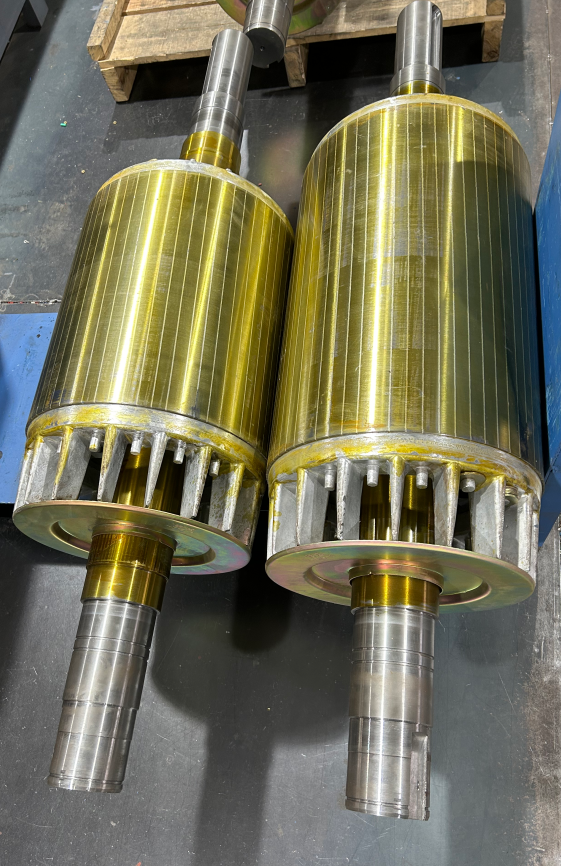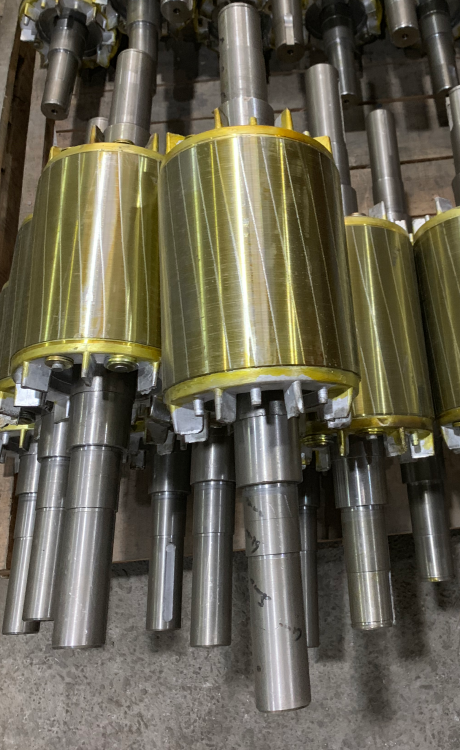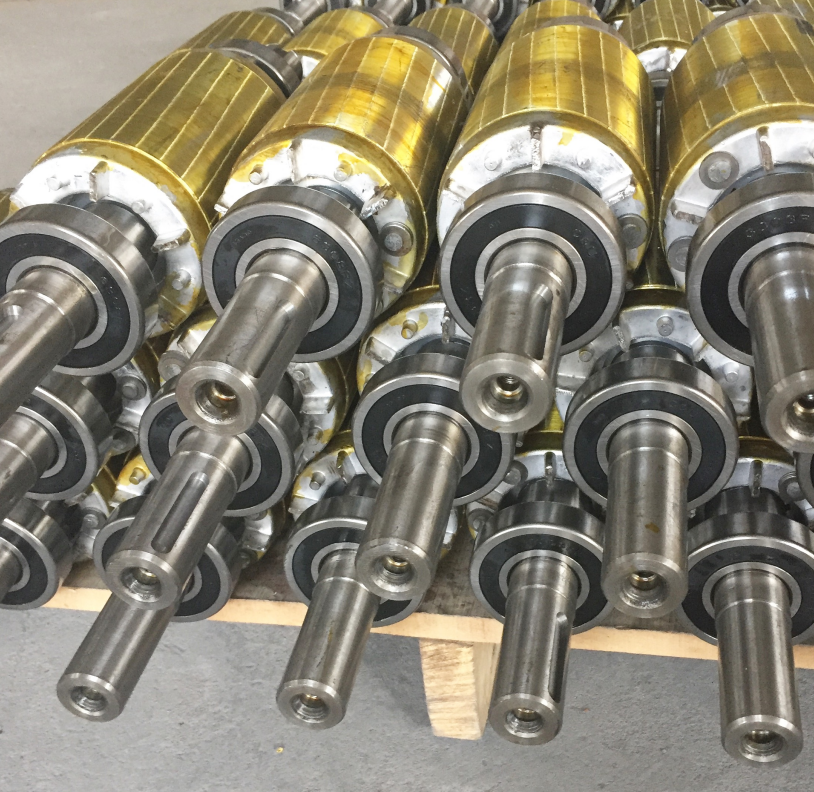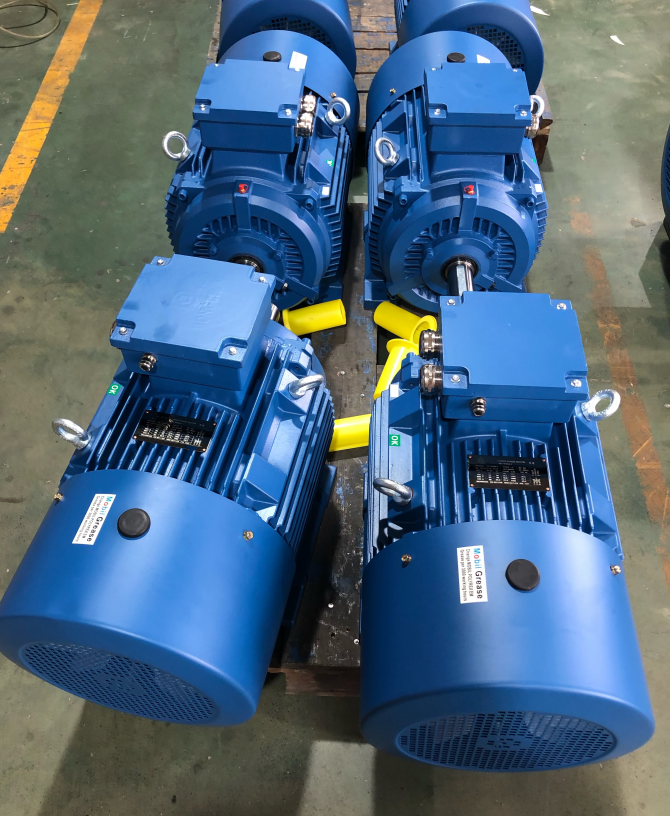In a repair shop, in a wound rotor high voltage electric motor, for the rotor winding phase failure.
The careful worker found that the small screwdriver used during the inspection had a force that was attracted to the winding and felt a little surprised.
In fact, this is an example of the electric motor rotor shaft being magnetized.
During the operation of the electric motors, the energized winding will produce a rotating magnetic field, and the ac motor rotor shaft is in a magnetic field.
In view of the special nature of the rotor shaft material 45 steel is a soft magnetic material, the magnetization becomes an inevitable phenomenon.

The magnetization effect of the shaft is that the shaft is magnetic for various reasons.
For example, the existence of unbalanced current winding of the rotor makes the shaft magnetized, welding, friction, collision and eddy current devices may make the equipment magnetic and establish a magnetic field.
Analysis of the causes and hazards of magnetization of the electric motors shaft
If two points of grounding occur inside the motor winding or in the excitation circuit, the rotor winding, rotor core or guard ring may be burned by the short-circuiting DC current.
At the same time, the asymmetry of the magnetic circuit formed by part of the short-circuiting turns will cause the vibration of the unit to increase, and may even cause the rotor body to magnetize.

For generator-type rotors, the main causes of shaft currents are the asymmetric effect of the magnetic line distribution and the magnetization effect of the rotor shaft.
The asymmetry of the magnetic line distribution is usually caused by the asymmetric gap in the laminated layers.
In addition to generator-type rotors, other equipment can also generate shaft currents due to the magnetization effect of the shaft.
The shaft magnetization effect is the magnetic properties of the rotor shaft for various reasons.
For example, the presence of unbalanced current windings in the rotor magnetizes the shaft, and welding, friction, collisions, and eddy current devices may magnetize the equipment and create a magnetic field.

The rotating magnetic field cuts the conductors and induces a certain potential in these parts, which forms a current loop when the potential rises enough to break through the oil film.
This current loop may pass through the entire rotor, or it may only create a localized short-circuit current in the bearing or floating ring seal, which in turn creates a new magnetic field that magnetizes the rotor shaft or other parts.
Thus, this magneto-electric interconversion creates a very strong magnetic field and a very high current in the diesel generator.
Generally speaking, ferromagnetic materials have a high magnetic permeability and are magnetized during the operation of the electric motor with different machine.
And from time to time in life we can find substances with magnetic properties that can make ferromagnetic substances magnetic.
An electric current can produce a magnetic field, and the molecular current inside a ferromagnetic material can also produce a magnetic field, and each molecule can be regarded as a small magnet.

In nature, many magnetic domains are formed inside a ferromagnetic material, and they are distributed in a haphazard manner, so that the whole object shows exactly no magnetism because the small magnets are oriented in different directions and their magnetism cancels each other out.
Once the ferromagnetic material is placed in the magnetic field, the magnetic domains will gradually converge under the action of external magnetism, and then the ferromagnetic material will show magnetic properties to the outside world.
This is the principle of making ferromagnetic materials magnetic.
Knowledge expansion - soft magnetic materials and hard magnetic center materials characteristics
Soft magnetic materials are characterized by high permeability and weak remanence.
It can produce strong magnetic induction strength under the action of a softer external magnetic field, and quickly reaches magnetic saturation with the enhancement of the external magnetic field.
When the external magnetic field is removed, its magnetic properties will basically disappear.
Commonly used are pure iron and silicon steel sheet.
Electrotechnical pure iron is generally used for DC magnetic field, of which electromagnetic pure iron is more common.
The silicon steel sheet is divided into hot-rolled and cold-rolled according to its manufacturing process, and cold-rolled silicon steel sheet is divided into single orientation and non-orientation.

Single orientation cold rolled silicon steel sheet has higher permeability and lower iron consumption when magnetized along the tying direction than along other directions, while non-oriented cold rolled has no directionality.
After the hard magnetic material reaches the magnetic saturation state under the action of external coupling in magnetic field.
It can maintain strong and stable magnetic properties for a long time even if the external magnetic field is removed.
Its characteristics are strong remanent magnetism and stable magnetism.
The main use is to make the core of permanent magnet motor and the magnet steel of magnetoelectric system instrument.

45 steel is medium carbon steel, should belong to the soft magnetic material, in the applied magnetic field can be magnetized, but after the removal of the applied magnetic field, there is basically no magnetic.
However, a little bit of magnetism will remain, so some steels need to be demagnetized after being processed by a grinder, because there is an electromagnetic suction cup on the grinder used to hold the material being processed.
High-carbon steel has some permanent magnetic properties, and the heads of certain screwdrivers have magnetic properties that can absorb iron, which are made of high-carbon steel.
በአስተያየቶች አካባቢ ስለ ኤሌክትሪክ ሞተሮች የበለጠ መረጃ እንዲያካፍሉን እንኳን በደህና መጡ!
ስለ ኤሌክትሪክ ሞተር ማንኛውም ጥያቄ እባክዎን የባለሙያውን ኤሌክትሪክ ሞተር ያነጋግሩ አምራች ውስጥ ቻይና እንደሚከተለው:

ዶንግቹን ሞተር እንደ መጓጓዣ፣ መሠረተ ልማት እና ግንባታ ባሉ የተለያዩ ኢንዱስትሪዎች ውስጥ የሚያገለግሉ ሰፊ የኤሌክትሪክ ሞተሮች አሉት።
ፈጣን ምላሽ ያግኙ።








